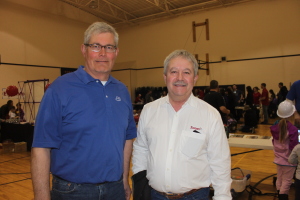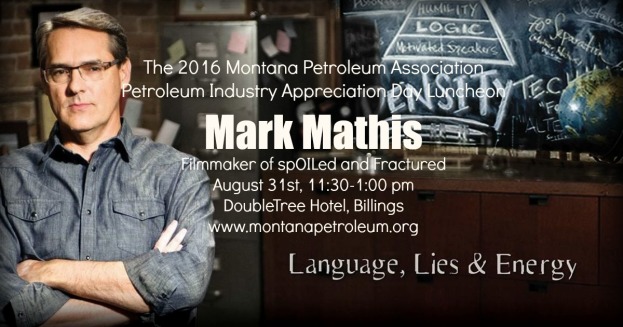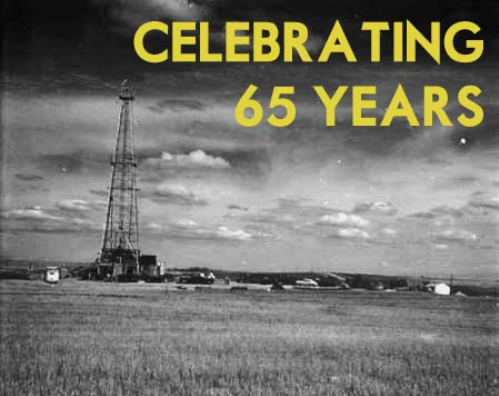The 2016 annual meeting of the Montana Petroleum Association (MPA) will take place in Billings August 30th and 31st at the DoubleTree Hotel, formerly the Crowne Plaza.
Event highlights include special guest, Congressman Ryan Zinke to speak Tuesday night at Pryor Creek Golf Course during the MPA barbeque. Recent past speakers include former Lt. Governor Angela McLean and Attorney General Tim Fox.
On Wednesday, the morning will commence at the DoubleTree with breakfast speaker Paul Babb of Butte, Community Relations Manager for NorthWestern Energy. Babb is a current member of the REAL Montana Program, a public-private partnership through the MSU Extension office, engaged in educating leaders of Montana on agriculture and natural resource development industries and issues. His presentation will be focused on the importance of “Telling the Story of Our Employees”.
The general meeting of MPA will follow, ahead of three panels which will address subjects including landowner relations, community engagement, methane rules, federal proposals, and collaboration with local government.
 “This year, we wanted to tailor our meeting to address Montana-specific issues that appeal to both industry and the general public,” said Alan Olson, Executive Director of MPA. “We’re hosting a good mix of industry experts and the regulators we work with on each of our panels.” (Olson, pictured right with MPA President, Greg Brown, CHS Refinery).
“This year, we wanted to tailor our meeting to address Montana-specific issues that appeal to both industry and the general public,” said Alan Olson, Executive Director of MPA. “We’re hosting a good mix of industry experts and the regulators we work with on each of our panels.” (Olson, pictured right with MPA President, Greg Brown, CHS Refinery).
Panelists include Jack King of Billings, longtime landman and former commissioner with the Board of Oil and Gas Conservation; Steve Durrett, current BOGC member and President of August Energy Partners; recent past president of the Montana Association of Professional Landmen, Nicole Bement of Sidney, now with XTO. Each panelist will address how industry can balance public concerns with oil and gas operations by improving communication.
On the Community Engagement panel, speakers will discuss how oil and gas businesses are preparing the next generation of industry leaders, and making lasting investments in the community. Panelists will be Dan Carter, Public and Government Affairs Manager at ExxonMobil; Danette Welsh, Government Affairs Manager at ONEOK, representing the midstream; and Shawna Bonini, Montana Tech grad and past president with the Society of Petroleum Engineers, and former Drilling Engineer for Chevron, and SM Energy in Billings.
A final panel on industry topics will address issues facing the oil and gas sector at the state and federal level, including hotly contested methane rules. Speakers include Tony Lucero, Lead of Regulatory Programs at Enerplus Resources; Karl Christians, Conservation District Specialist, DNRC; and Brian Fakharzadeh, VP of Development and Operations at Western Energy Alliance.
Keynote speaker of this year’s Petroleum Industry Appreciation Day luncheon will be author and filmmaker, Mark Mathis. Mathis has spent most of his career challenging widely accepted ideas that are he describes as “simply untrue”. Mathis’s resume includes a decade as a TV news anchor and reporter, talk radio host, media trainer, founder of Citizens’ Alliance for Responsible Energy, speaker and documentary film producer/director.
In his film, spOILed, Mathis highlighted the public’s ignorance of the central role oil plays in our lives. Mark’s new film, Fractured, exposes how language is used to dangerously deceive us about the most essential component to the function of the modern world—energy.
Registration is available online at montanapetroleum.org, and the public is invited to attend. Press requests and additional questions can be directed to Jessica Sena, 590-8675.










 U.S. Energy Information Administration
U.S. Energy Information Administration
 U.S. Energy Information Administration
U.S. Energy Information Administration





